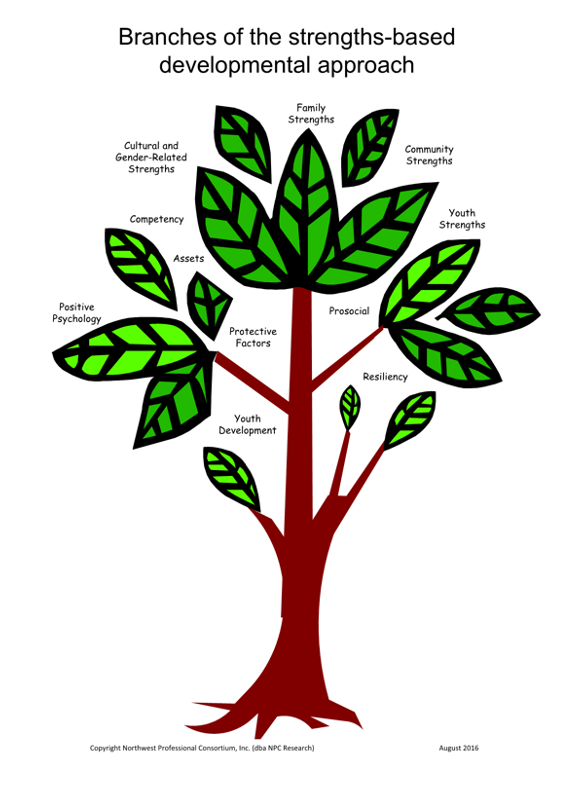Greetings, AEA365 readers! A quick note: this post was originally published on July 30, 2020. Juliette provided some great insights, and we hope you’ll enjoy this second posting. Happy reading!
Hello fellow evaluators! I am Juliette Mackin from NPC Research in Portland, Oregon, and I have worked as an evaluator for 25 years. I am in this line of work to help people, programs, communities, and systems and am a strong believer in strength-based approaches to programming AND evaluation.
One of the most rewarding aspects of my career has been training direct service staff, managers, and policy makers about the benefits of strength-based service delivery. The concepts and applications are broad, because they are about human nature: How do people and systems change? How can we facilitate healthy development, program improvement, and efficient and effective human service systems? A few core elements that underlie success are hope, connection, empathy, and identity.
- Hope is the belief that change is possible and the ability to envision a different future.
- Connection gives us the support we need to learn and change, the commitment to do our best, and the desire to contribute to our communities.
- Empathy allows us to see the world from others’ perspectives and understand the challenges that others face, pushing us to engage and help.
- Identity is how we see ourselves and how others see us – what makes us who we are and what brings us together.
Lessons Learned

Strength-based approaches are powerful for motivating and facilitating change by giving people hope, building relationships, and encouraging accountability. Applying these concepts to evaluation can yield meaningful outcomes.
As evaluators, we often look for gaps, challenges, difficulties, and problems. We make recommendations. We provide feedback about what is going wrong or what needs to be done better. It is easy to get caught up in the negatives.
Hot Tips
Remember the positives. Set an explicit intention to seek and highlight strengths. Think about how we frame research questions, what data we gather, and how we present results. How will our work facilitate change, support people, allow people to hear our messages, and encourage them to use the information?
Here are some ways to build the positive into evaluation practice:
- Talk with people affected by the issue or receiving services. Ask what is going well. What positive qualities can they build on? What do they appreciate about the program or system?
- Talk with people providing services, administering programs, and making decisions. How will the evaluation findings impact the program, system, and community? What successes have they experienced?
- Document protective factors in addition to risk factors.
- Report strengths and accomplishments: for example, the proportion of youth who have never used drugs or alcohol, the proportion of participants who graduated.
- Provide a report section on commendations: What works well? What should the program or system continue to do?
We’re looking forward to the fall and the Evaluation 2024 conference with our colleagues in the Local Arrangements Working Group (LAWG). Do you have questions, concerns, kudos, or content to extend this AEA365 contribution? Please add them in the comments section for this post on the AEA365 webpage so that we may enrich our community of practice. Would you like to contribute to AEA365? Review the contribution guidelines and send your draft post to AEA365@eval.org. The views and opinions expressed on the AEA365 blog are solely those of the original authors and other contributors. These views and opinions do not necessarily represent those of the American Evaluation Association, and/or any/all contributors to this site.
